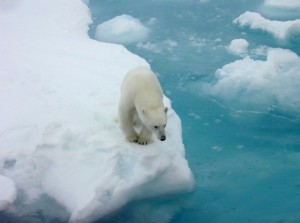
Research on the impacts of climate change often considers its effects on people separately from impacts on ecosystems. But a new study is showing just how intertwined we are with our environment by linking our warming world to a global rise in conflicts between humans and wildlife.
The research, led by scientists at the University of Washington’s Center for Ecosystem Sentinels and published Feb. 27 in Nature Climate Change, reveals that a warming world is increasing human-wildlife conflicts.
“We found evidence of conflicts between people and wildlife exacerbated by climate change on six continents, in five different oceans, in terrestrial systems, in marine systems, in freshwater systems – involving mammals, reptiles, birds, fish and even invertebrates,” said lead author Briana Abrahms, a UW assistant professor of biology. “Although each individual case has its own array of different causes and effects, these climate-driven conflicts are really ubiquitous.”
To identify trends, the team pored over published, peer-reviewed incidents of human-wildlife conflicts and identified cases that were linked specifically to the effects of climate change. These include both short-term climate events — such as a drought — as well as longer-term changes. Warming in the Arctic, for example, is leading to loss of sea ice which has left polar bears short of food. They increasingly travel on land, sometimes entering human settlements and attacking people, as a recent incident in Alaska illustrates.
The new study shows that climate shifts can drive conflicts by altering animal habitats — like sea ice for polar bears — as well as the timing of events, wildlife behaviors and resource availability. It also showed that people are changing their behaviors and locations in response to climate change in ways that increase conflicts. Other examples of the effects of short- and long-term climate events include:
- Torrential floods in Tanzania led to more lion attacks after their usual prey migrated away from floodplains.
- Higher air temperatures in Australia triggered more aggressive behavior in eastern brown snakes, leading to more incidents of snake bites.
- Wildfires in Sumatra, Indonesia — triggered by El Nino — drove Asian elephants and tigers out of reserves and into human-inhabited areas, leading to at least one death.
- Disruption of terrestrial food webs during La Nina events in the Americas drove black bears in New Mexico and foxes in Chile into human settlements in search of food.
- Warmer air and ocean temperatures in a severe El Nino led to an increase in shark attacks in South Africa.
Most cases of human-wildlife conflict linked to climate involve a shift in resources — not just for wildlife, but also for people.
Read full article at the University of Washington
